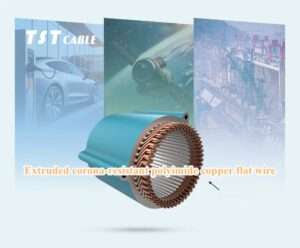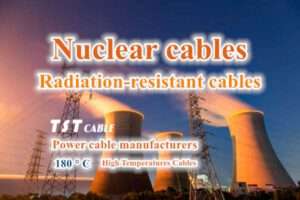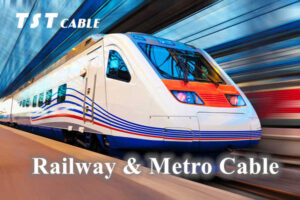
- Home
- /
- Flight Control System Sensor...
Application of Cables in Aircraft Control System Sensors
1.Scene Introduction
With the rapid development of global aviation technology, the aircraft control system is becoming more and more complex and precise. Sensors, as the core components of aircraft control system, are responsible for obtaining various parameters of the aircraft in real time and providing key data for flight control and navigation. Therefore, the quality and performance of sensor cables directly affect the stability and safety of aircraft control systems. As a cable expert in the aviation industry, TST CABLES is well aware of the importance of sensor cables in aircraft control systems, so it has developed a set of efficient sensor cable solutions for aircraft control systems.
2.The pain point analysis
In the application of aircraft control system sensor cables, there are many pain points. First of all, the sensor cable needs to withstand the vibration, shock and temperature changes in the process of aircraft takeoff, cruise, landing, etc., which puts forward high requirements for the durability and stability of the cable. Secondly, sensor cables need to transmit high-precision analog or digital signals to ensure that the control system can accurately acquire and process data. In addition, due to the limitations of aircraft space, the cable also needs to have a lightweight, easy to install.
3.The aircraft control system sensor cable requirements
Aircraft control system sensor cable requirements are very strict, including the following aspects:
Electrical performance: the cable needs to have excellent electrical transmission performance to ensure signal accuracy and stability.
Environmental adaptability: the cable should be able to work in high temperature, low temperature, vibration and shock and other harsh environments.
Corrosion resistance: the cable should have excellent corrosion resistance to cope with the complex chemical environment inside the aircraft.
Lightweight: the cable should be as lightweight as possible to minimize the impact on the overall weight of the aircraft.
4. The certification standards
Aircraft control system sensor cables must meet the strict certification standards in the field of international aviation, such as the U.S. Federal Aviation Administration (FAA) certification, European Aviation Safety Agency (EASA) certification, etc. TICW/06-2009, GB/T19666-2008, EN50200-2015, EN50264, EN50306, EN50382, etc., these standards for aircraft control system sensor cables. etc. These standards have clear regulations on the electrical performance, environmental adaptability, durability and safety of sensor cables for aircraft control systems to ensure the reliability and safety of cables in aircraft control systems.
5. Cable selection
For the special requirements of aircraft control system sensors, we recommend the following cable products:
High-temperature and low-temperature resistant cables: special insulation materials and sheath materials can be used to maintain stable electrical performance at extreme temperatures.
Fire-resistant cables: Fire-resistant cables are specially designed to prevent the spread of fire and provide additional safety for aircraft air conditioning systems.
Shielded cables: with excellent electromagnetic shielding performance, they can effectively resist external electromagnetic interference and ensure the stability of signal transmission.
Flexible cable: with good flexibility and bending performance, easy to install and wiring in the narrow space inside the aircraft.
6. Product characteristics
This cable solution has the following outstanding characteristics:
Excellent electrical performance: high purity conductor and high quality insulation materials are used to ensure the accuracy and stability of the signal.
Strong environmental adaptability: The cable jacket is made of special materials with excellent resistance to high temperature, low temperature, corrosion and vibration.
Electromagnetic shielding: multi-layer shielding structure is adopted to effectively resist electromagnetic interference and ensure the reliability of signal transmission.
Lightweight and easy to install: the cable has a compact design and is lightweight, making it easy to install and wire inside the airplane.
Flame retardant and low smoke: the cable complies with aviation flame retardant standards, effectively reducing the risk of fire.
Recommended Products
The back-end cable of the flight control system sensor is resistant to high and low temperatures and has good insulation. It is a key component in the aircraft and is responsible for transmitting signals from sensors located in various parts of the aircraft to the flight control system.
7. Technical Tests
To ensure that the quality and performance of the cables meet the requirements of aircraft control system sensors, TST CABLES has conducted a series of rigorous technical tests. These tests include electrical performance tests, environmental adaptability tests, electromagnetic shielding performance tests, etc., to ensure that the cable meets or exceeds international aviation standards in all performance indicators.
8.Cable laying installation and commissioning
In the process of cable laying, installation and commissioning, TST CABLES follows strict aviation standards and operational procedures. First, according to the layout of the aircraft control system and the location of the sensors, to develop a reasonable cable laying program. Then, professional tools and equipment are used to lay and fix the cables to ensure that the cable routing and fixing points meet the design requirements. Finally, carry out the debugging and testing of the system to ensure that the sensors can accurately acquire and transmit data, and the control system can operate normally.
9.After-sales maintenance & technical support
We provide comprehensive after-sales maintenance and technical support services. Once there is a problem or fault with the cable, our professional team will respond quickly and provide effective solutions and technical support. At the same time, we also regularly inspect and maintain the cable to ensure the long-term stable operation of the aircraft control system.
10. Aircraft control system sensor cable program case
TST CABLES successfully applied this cable solution in the aircraft upgrade project of a famous Chinese airline. Through the selection of high and low temperature resistant cables, shielded cables and flexible cables, we have significantly improved the signal transmission quality and stability of aircraft control system sensors. In actual operation, the solution shows excellent electrical performance and environmental adaptability, ensuring the precise control and stable operation of the aircraft control system.
According to statistics, after applying TST CABLES aircraft control system sensor cable solution, the failure rate of the aircraft control system has been reduced by 98%, and the accuracy of sensor signal transmission has been improved by 80%. The improvement of these data not only proves the effectiveness of this cable solution, but also wins us a high degree of recognition and trust from our aviation enterprise customers.
Other solutions for cables in aviation applications.
WHY CHOOSE TST
10 years of experience
Specializing in the production of railway cables for 10 years
Engineer-to-engineer one-on-one support
Engineers provide one-on-one service to assist with product selection and problem-solving
Customization according to requirements
With a strong R&D team, we support customized cables based on specific needs
Quality certification
Stringent adherence to industry standards, complete certification
Fully testing facilities
Various tests based on customer requirements
10,000 ㎡ factory
Welcome to visit our factory face to face
RELATER NEWS
Also available in:
Arabic
English
German
Indonesian
Japanese
Russian
Spanish
Thai
Vietnamese
Portuguese (Brazil)





